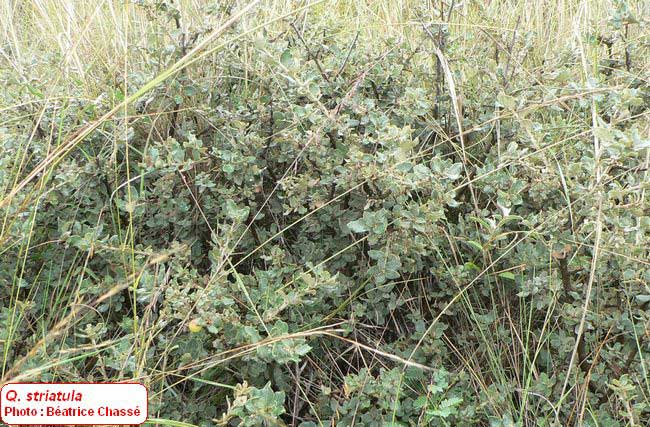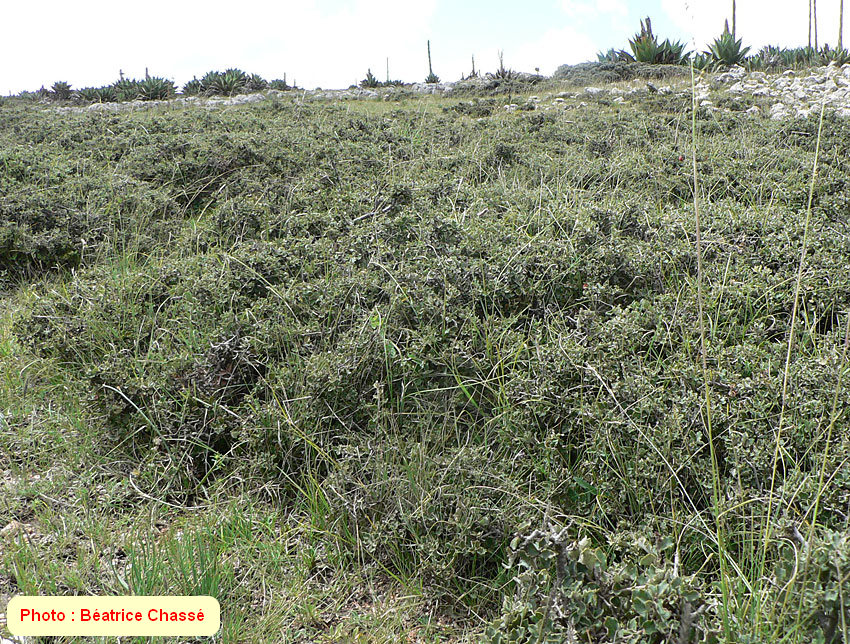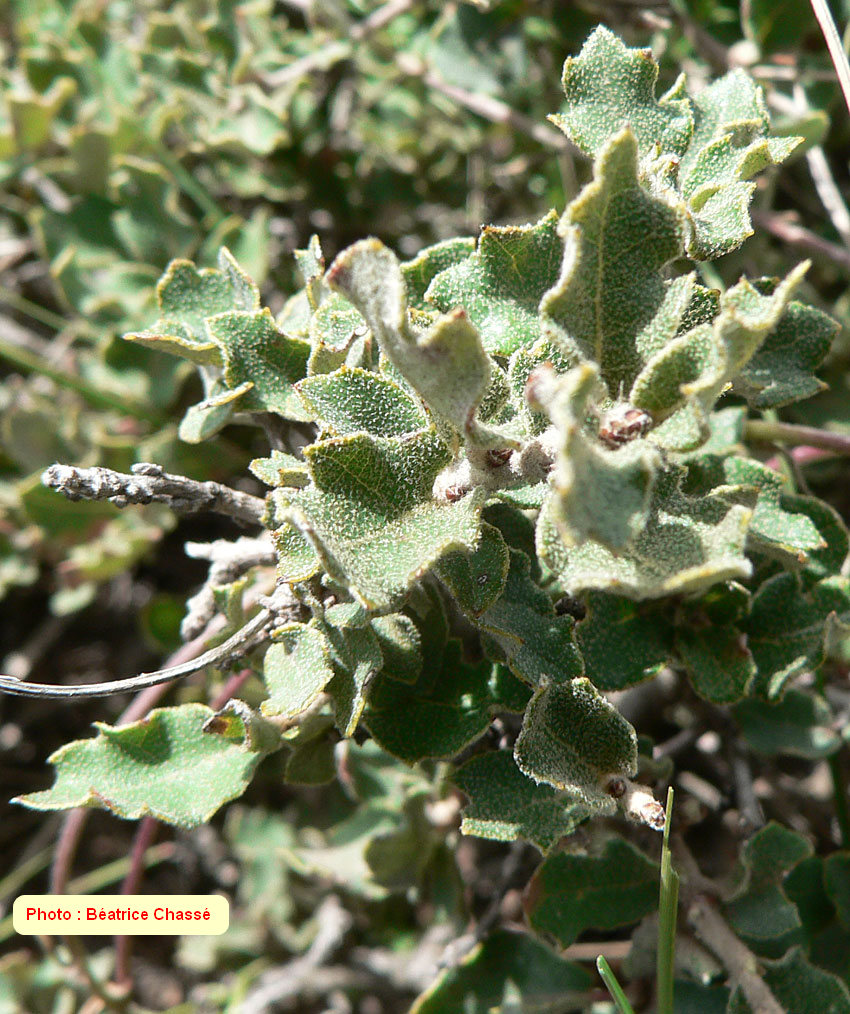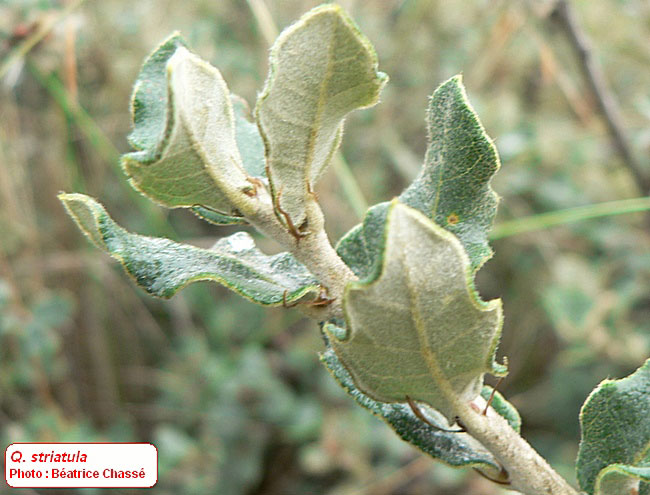| Quercus striatula | |
| Author |
Trel. 1924 Mem. Natl. Acad. Sci. 20: 93 Diagnosis here |
| Synonyms |
striatula var. otinapensis Trel. 1924 |
| Local names | |
| Range | Mexico in the Sierra Madre Occidental (Aguascalientes, Chihuahua, Durango, Guanajuato, Zacatecas) ; 1500-3000 m ; |
| Growth habit | 0.3-1.2 m; |
| Leaves | 1-2.5 x 0.5-1.4 cm; subcoriaceous; close together on the twig; elliptic-lanceolate or oblong more or less lanceolate; apex acute to rounded mucronate; base rounded or obtuse, sometimes cordate; margin slightly revolute (sometimes flat), entire or lobed-dentate with 1-3 pairs of mucronate teeth, mostly asymmetrically; adaxially dull greyish green, glabrescent, with scattered trichomes, denser on the veins of the base of the blade (solitary simple and 7-14 rayed stellate trichomes); abaxially paler, densely tomentose with trichomes identical as those adaxially, with also simple glandular and bulbous glandular trichomes; 3-7 vein pairs, more or less impressed above, raised under; epidermis bullate and papillose; petiole 1-2.5 mm, tomentose at first, then glabrescent; |
| Flowers | |
| Fruits | acorn 1.1-1.5 cm, ovoid, slightly striated, singled or paired, sessile or on a peduncle to 3.5 mm long; enclosed 1/4 or 1/3 by cup; cup half-round, with straight margin, 8-12 mm in diameter, thin scales pubescent at base and hairless at the rounded apex; maturing the first year in August to September; |
|
Bark, twigs and |
bark grey, furrowed, sometimes in thin irregular plates; twig 0.7-1.5 mm in diameter, greyish tomentose at first then glabrescent, with inconspicuous lenticels; bud subglobose 1-2 mm long; stipules glabrescent 1.5-3 mm. |
| Hardiness zone, habitat | hardy zone 7-8 |
| Miscellaneous |
-- Sub-genus Quercus, Section Quercus, Subsection Leucomexicanae,
Group Microphyllae; |
| Subspecies and varieties |
|
| Pictures |
More pictures HERE
|





